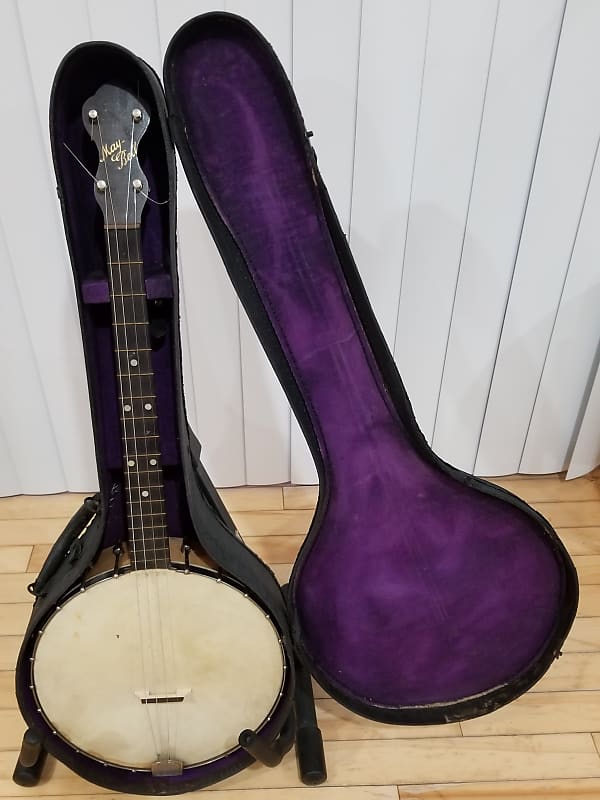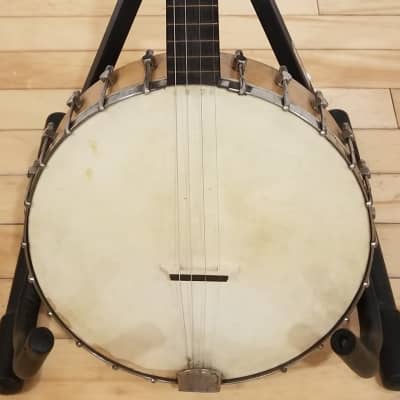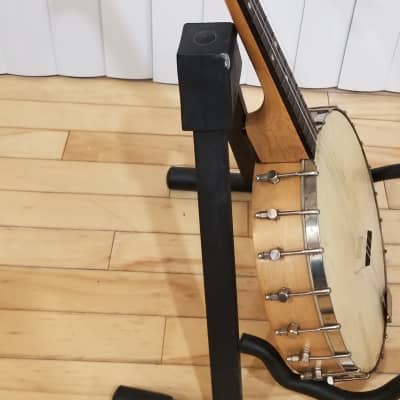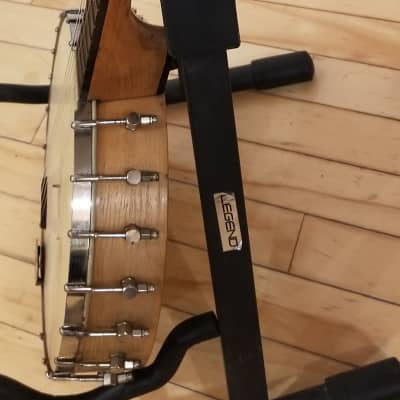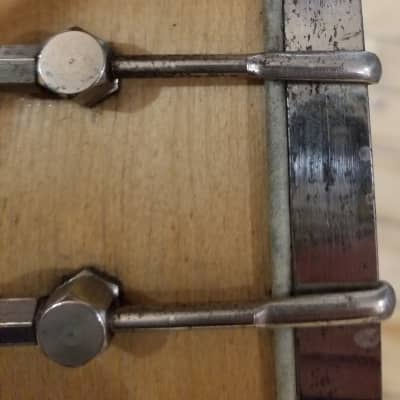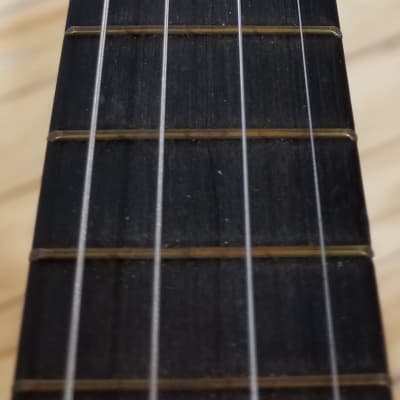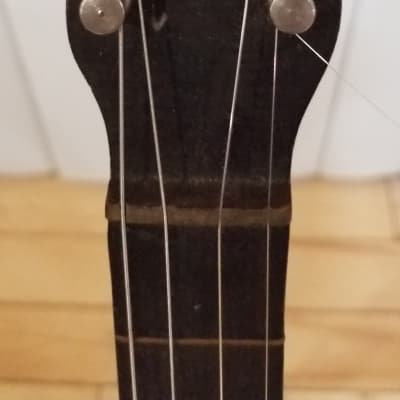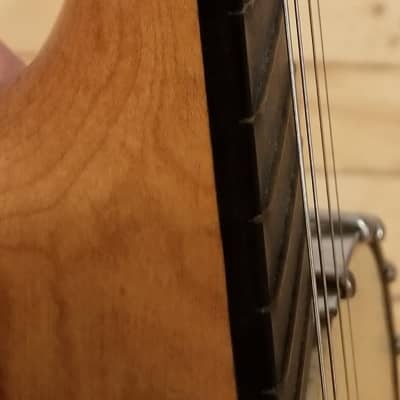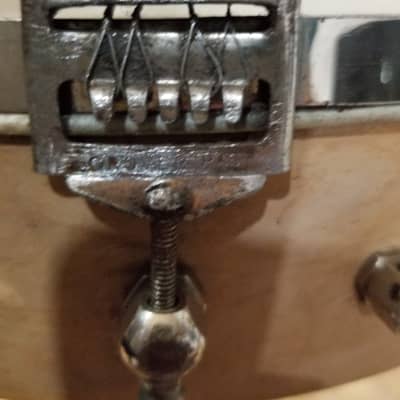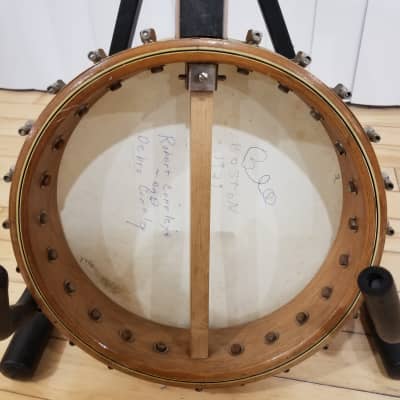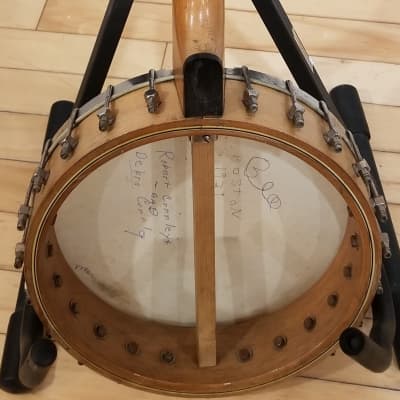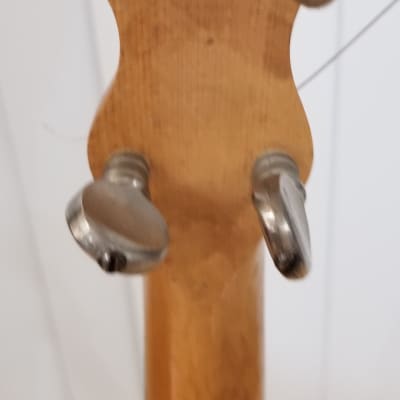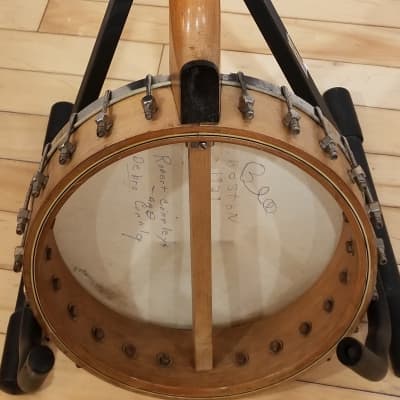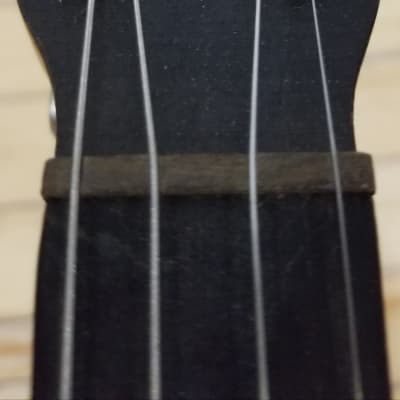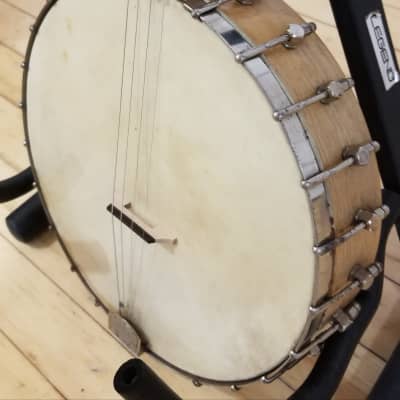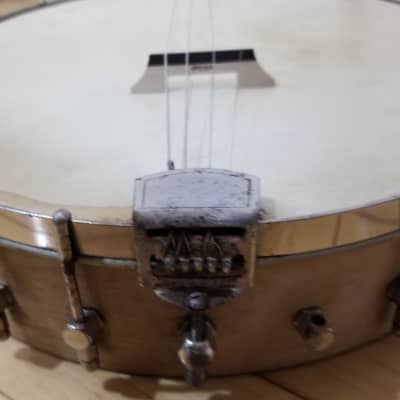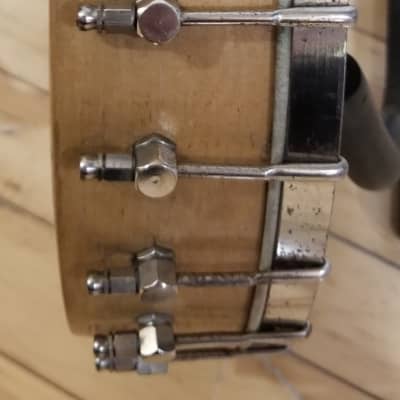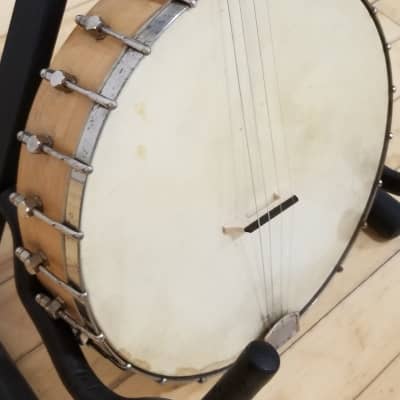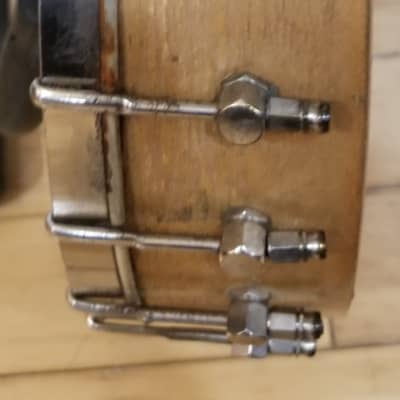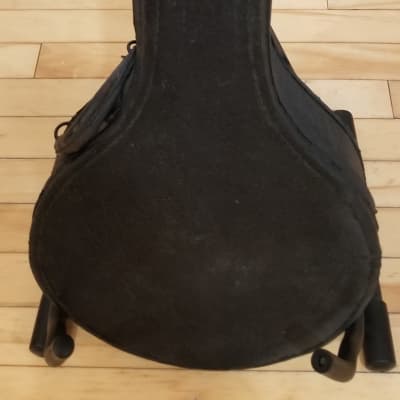Please read ad thoroughly for shipping info.
See my store for other cool finds.
Scroll down for video demo (similar unit).
Old School Bluegrass.
Here is a lovely 1929 Slingerland hammer-claw 4 string tenor banjo. It is original except for a new Grover bridge. The skin is an original Rogers and sounds great. The neck is straight with and ebony fretboard. Frets are good. Action is good. This instrument was stored properly and stayed with it's original owner all of it's life. It sounds authentic and plays well. Includes original hard case.
The company that manufactured this banjo is the namesake for the founder H. H. Slingerland and his company manufactured banjos in Chicago from 1922 up into the late 1930's. I have found Slingerland banjo ads up to 1938. Of course, presently Slingerland is better known for drums and manufactured drums from 1928 and continuing for many years thereafter.
Now about your banjo:
Slingerland began making banjos in a factory at 1815 Orchard St., Chicago, in Jan. 1922.
For the most part these initial Slingerland banjos were 17 fret open back tenors.
Slingerland coined the May Bell banjo brand name about Dec. 1923 and received a trademark for the name in July 1924.
Thereafter Slingerland introduced several models under the May Bell banner.
The May Bell Queen was introduced in Aug. 1927. The initial Queen differed from your banjo in that it was primarily a birds-eye maple model though it was the "modern" 19 fret tenor with a resonator. No pearloid.
In Jan. 1928 Slingerland moved his factory from Orchard St. to a new factory located at 1325 Belden Ave., Chicago.
In Feb. 1928 Slingerland introduced the "NEW" May Bell Queen tenor with the 19 fret 23" scale and extended resonator. The announcement stated that the Queen could be stained walnut or "white ivory". I'm not sure if the "white ivory" was a reference to the pearloid peghead and fingerboard like your banjo. In any event I think your Queen was manufactured at the new Slingerland Belden Ave. factory in the early 1930's.
In ca. 1930 Slingerland issued a catalog that included the "NEW" May Bell Queen depicting and describing the May Bell Queen and a scan is attached FYI. The pearloid veneer on your banjo is described as "Marine Pearl" which, if nothing else, is a very cool name The Queen was the lower priced model in this catalog. I do not know from personal knowledge about the build characteristics of the Queen but generally speaking the May Bell banjos have a good reputation for quality materials and parts here on BHO.
Please contact us with your shipping address prior to purchase for an accurate quote.
Items are packed properly and shipped within 24hrs.
